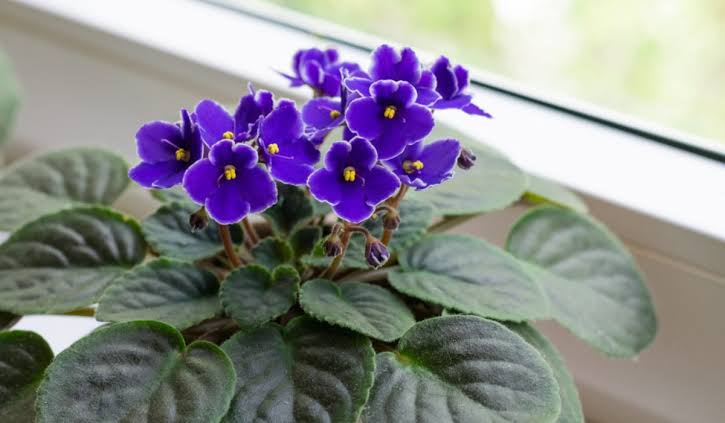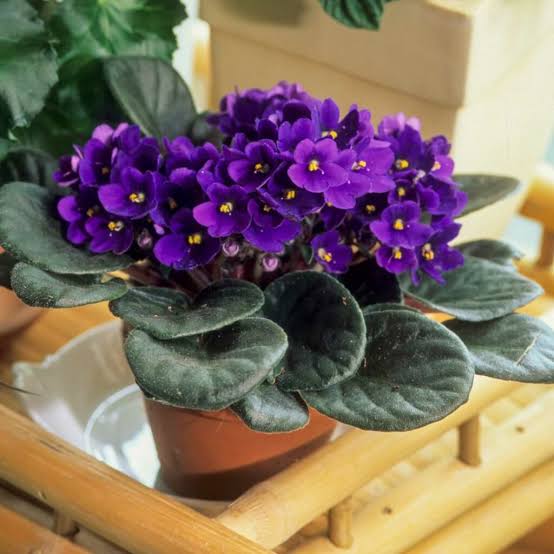African violets are popular houseplants that are known for their beautiful flowers. They are relatively easy to care for, but there are a few things you need to know to keep them healthy and thriving.
Light: African violets prefer bright, indirect light. Avoid placing them in direct sunlight, as this can scorch their leaves.
Water: African violets need to be kept moist, but not soggy. Water them when the top inch of soil is dry. Avoid getting water on the leaves, as this can cause them to rot.
Soil: African violets prefer a well-draining potting mix. A mix that is specifically designed for African violets is ideal.

Fertilizer: African violets do not need to be fertilized often. Fertilize them once a month during the spring and summer with a balanced fertilizer.
Humidity: African violets prefer high humidity. If the air in your home is dry, you can mist the leaves of your plant with water occasionally.
Pests and diseases: African violets are relatively pest- and disease-free. However, they can be susceptible to mealybugs and spider mites. If you see any pests on your plant, treat them immediately with an insecticidal soap or neem oil.
Propagation: African violets can be propagated from leaf cuttings. Simply remove a healthy leaf from the plant and let it callous over for a few days. Then, plant the leaf in a pot filled with well-draining potting mix. The leaf should root in a few weeks.
Pruning: African violets do not need to be pruned often. However, you can cut back any dead or damaged leaves.
Potting: African violets should be repotted every two to three years, or when they outgrow their current pot. Choose a pot that is one size larger than the current pot and make sure that the pot has drainage holes.
Temperature and humidity: African violets prefer warm temperatures between 65 and 75 degrees Fahrenheit. They can tolerate lower temperatures, but their growth will slow down. African violets also prefer high humidity. If the air in your home is dry, you can mist the leaves of your plant with water occasionally.
Watering: African violets should be watered from the bottom. Place the pot in a saucer filled with water and let the plant soak up the water for about 15 minutes. Then, remove the pot from the saucer and allow the excess water to drain out. Do not overwater, as this can lead to root rot.
Fertilizer: African violets should be fertilized once a month during the spring and summer with a balanced fertilizer. Use a fertilizer that is diluted to half strength. Do not fertilize during the fall and winter.
Pests and diseases: African violets are relatively pest- and disease-free. However, they can be susceptible to mealybugs and spider mites. If you see any pests on your plant, treat them immediately with an insecticidal soap or neem oil.
With proper care, your African violet will thrive for many years.
Here are some additional tips for caring for African violets:
- African violets are poisonous to both humans and animals. If you have children or pets, it is important to keep the plant out of reach.
- African violets can be toxic to the skin, so it is important to wear gloves when handling the plant.
- African violets can be propagated from leaf cuttings or from air layering.
- African violets can be grown in hanging baskets or in pots on the floor. They make a great addition to any indoor space.
Here are some common problems that can occur with African violets and their solutions:
Problem: The leaves of the African violet are turning brown. Solution: This is usually caused by overwatering. Allow the soil to dry out completely between waterings.
Problem: The leaves of the African violet are turning yellow. Solution: This is usually caused by underwatering. Water the plant more frequently.
Problem: The leaves of the African violet are curling. Solution: This is usually caused by low humidity. Increase the humidity around the plant by misting the leaves with water or placing the plant in a room with a humidifier.
Problem: The leaves of the African violet are dropping. Solution: This is usually caused by a lack of light. Move the plant to a brighter location.
Problem: The African violet is not blooming. Solution: This is usually caused by a lack of light or fertilizer. Move the plant to a brighter location and fertilize it more frequently.
With proper care, African violets can thrive for many years and provide you with years of enjoyment.


One thought on “Everything You Need to Know About African Violets”